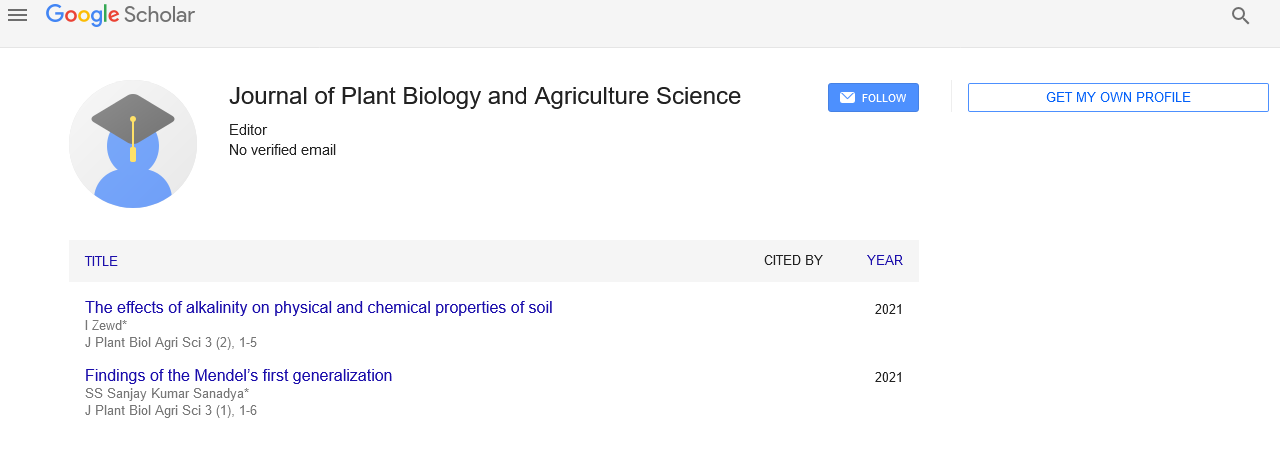Challenges for future agriculture
Received: 05-Oct-2021 Accepted Date: Oct 20, 2021; Published: 27-Oct-2021
Citation: Glaros E. Challenges for future agriculture. J Plant Biol Agri Sci. 2021;3(2):8.
This open-access article is distributed under the terms of the Creative Commons Attribution Non-Commercial License (CC BY-NC) (http://creativecommons.org/licenses/by-nc/4.0/), which permits reuse, distribution and reproduction of the article, provided that the original work is properly cited and the reuse is restricted to noncommercial purposes. For commercial reuse, contact reprints@pulsus.com
Description
Every day, the food we eat connects us to a vast global network of farmers, merchants, food manufacturers, retailers, and many others involved in bringing food to the table. Most of us probably don't think about it while eating a slice of fruit or bread, but this global food system is at the heart of some of the biggest challenges facing humanity.
Climate change, soil erosion, biodiversity loss, and changes in consumer tastes and concerns about food production are all under increasing pressure. And the cooperative nature of agriculture (plants, pests, diseases) continues to raise its own challenges.
Even though modern agriculture offers a number of solutions, the results are not always the same, as every farm is unique: different landscapes, soils, available technologies, potential yields.
The main challenges facing the food and agriculture system in the near future can be divided into three main types.
Challenges for food stability and availability
1. Sustainably improve agricultural productivity to meet increasing demand.
2. Securing a sustainable natural resource base.
3. Fighting climate change and exacerbation of natural disasters.
4. Prevent new cross-border threats to agriculture and food systems.
Challenges for food access and utilization.
5. Eradicate extreme poverty and reduce inequality.
6. End hunger and all forms of malnutrition.
7. Improve income opportunities in rural areas and address the root causes of migration.
8. Building resilience against prolonged crises, disasters and conflicts.
9. Make the food system more efficient, more comprehensive and more elastic.
10. Address the need for consistent and effective national and international governance.
Given the limited scope of agriculture to expand the use of more land and water resources, the increase in production needed to meet increasing food demand is primarily due to improved productivity and resource efficiency must be brought.
The main challenge is to maintain and improve the livelihoods of small and family farmers and produce more with fewer resources while ensuring access to food for the most vulnerable people. There are two combinations of investment in social protection to address malnutrition immediately and production activities to sustainably increase income opportunities for the poor, especially appropriate investment in agriculture and rural economies, need an approach regarding these.
The world needs to move to a more sustainable food system that uses land, water and other inputs more efficiently and significantly reduces fossil fuel consumption. As a result, agricultural greenhouse gas emissions are significantly reduced, biodiversity is significantly protected and waste is reduced. According to the report, this is to the agriculture and food system to promote innovation, support increased sustainable production and find better ways to address issues such as water scarcity and climate change. More investment and increased spending on research and development will be needed for better improvement.
In addition to improving production and resilience, building a food supply chain that better connects farmers in low- and middle-income countries with urban markets is equally important-affordable, nutritious and safe foods at affordable prices, such as such as pricing policies and social protection programs, it says.





